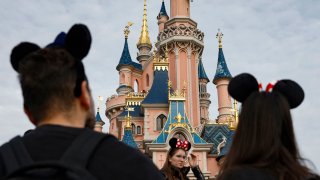
- Disney's experiences division, which includes its theme parks, is the best-performing part of Disney's business as the company tries to adapt to changes in movie and TV viewing habits.
- Josh D'Amaro, who leads the division, is overseeing additions and changes to the parks as Disney pledges $60 billion in investments in the segment over the next decade.
- From innovations in robotics and animatronics to more immersive storytelling, Disney is looking for new ways to keep people coming to its parks.
Three years ago, Josh D'Amaro stood in a nearly empty Disneyland.
The California theme park's Main Street was quiet: no cheery tunes from famed barbershop quartet the Dapper Dans, no clanging railroad bell, and no wafting scent of waffle cones from the Gibson Girl Ice Cream Parlor.
It had been more than a year since the Covid pandemic had forced Disney's domestic parks to shutter, but D'Amaro, chair of Disney's experiences division, was confident guests would flood back in when the gates reopened.
His confidence was well founded. D'Amaro's division is now Disney's best-performing segment, rebounding and offering stability in recent quarters as Disney shuffles to adapt its entertainment business to match consumer habits that changed after the pandemic.
On that quiet day in 2021, D'Amaro had been in charge of the parks, experiences and consumer products division, now just called experiences, for only a little more than a year. He took the helm when Bob Chapek was tapped as CEO in early 2020. D'Amaro spent much of those 12 months dealing with substantial operating losses from global park closures, a docked fleet of cruise ships and a plunge in hotel visits.
Revenues fell 35% in 2020, a nearly $10 billion decrease from the $26.2 billion the experiences division had tallied in the year before the pandemic. Then revenue dropped an additional 3% in 2021.
Money Report
But a lot has changed in three years. D'Amaro — sitting in a conference room in Burbank, an hour north of Disneyland and just a few miles from the heart of Disney's theme park creative engine, Walt Disney Imagineering — has much to brag about.
The experiences division posted record revenue of $32.5 billion in fiscal 2023, a 16% increase from the prior year. Operating income jumped 23% to $8.95 billion.
Get a weekly recap of the latest San Francisco Bay Area housing news. Sign up for NBC Bay Area’s Housing Deconstructed newsletter.
D'Amaro described the pandemic as "an opportunity to take a breath" and a time for his division to "think about what we wanted the future to look like."
"So, as difficult as that situation was, we saw it as a platform, a new vantage point for us to look at the operation," he said.
While its parks were shuttered, Disney continued construction of its Avengers Campus themed land in Disneyland and touched up old favorites such as the King Arthur Carousel. And it built new rides, and refurbished others, in the years that followed.
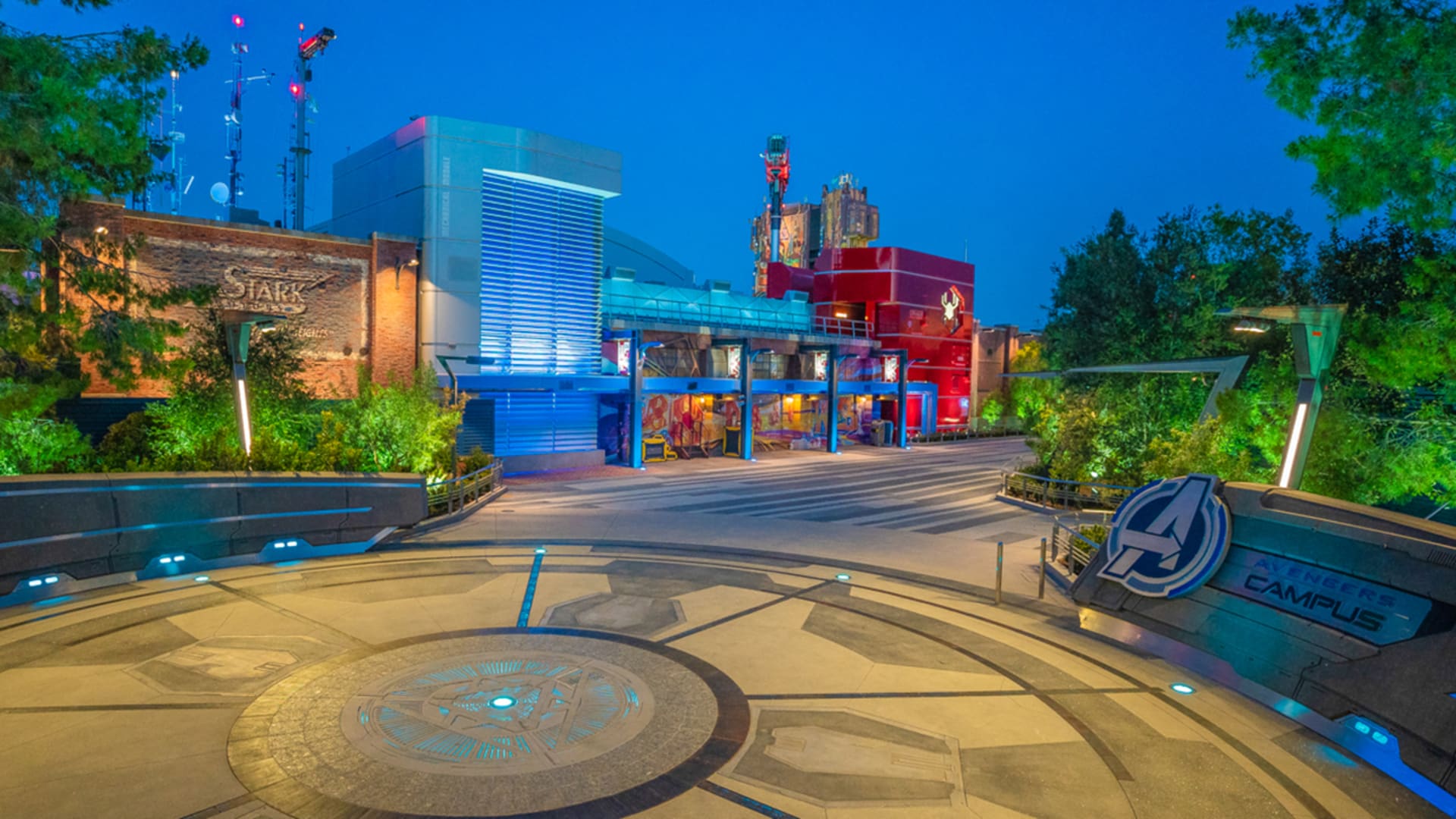
World of Frozen opened in Hong Kong Disneyland in November, and a Zootopia land opened in Shanghai Disneyland in December. The company also launched two new rides at Walt Disney World in Florida: a "Guardians of the Galaxy"-themed ride in its Epcot park in 2022, and a "Tron"-themed roller coaster in the Magic Kingdom in April 2023.
Additionally, the company has revamped attractions and themed park areas, turning the Pacific Wharf area of Disneyland's California Adventure into San Fransokyo Square, based on the animated hit "Big Hero 6," updating Mickey's Toon Town at Disneyland and making major transformations at Epcot.
Those investments, coupled with new technology in mobile ordering and the ability for guests to pay to skip to the front of the line for certain rides, have kept guests coming and boosted Disney's earnings at a time when the entertainment division is struggling to recapture its late-2010s boom.
"Sitting here now, today, you've seen our results; our results have been record-setting as recently as the last first-quarter earnings," D'Amaro said. "Record revenue, record margins, record operating income. So, the recovery has been swift, it's been strong. But more importantly, I think the future looks incredibly bright for our segment — and the company, quite frankly."
In 2023, experiences was the best-performing part of Disney's business, accounting for 36% of the company's total revenue but 70% of its operating income. Meanwhile, Disney's entertainment division, which includes its theatrical and streaming businesses, represented 45% of revenue but just 11% of operating income.
The ability to get more out of the parks in recent years was crucial for CEO Bob Iger and Disney's board as they tried to make the company more profitable and improve share performance. On Wednesday, Disney beat back activist investor Nelson Peltz's proxy fight, reelecting its full board.
Always innovating
The division's strength is why Disney has pledged to invest $60 billion in experiences over the next 10 years — a key part of its strategy to keep the parks fresh and relevant in a competitive segment.
D'Amaro said about 70% of that money will go toward "new experiences" in domestic and international parks, along with cruise lines. The other 30% will go toward technology and infrastructure, including maintenance of existing attractions.
Innovation at theme parks has been a central goal since Walt Disney ran the company. Disney's founder used to say that its theme parks would "never be finished" and would evolve to meet consumer demand and changing tastes, along with developments in technology.
Walt Disney Imagineering has long been on the cutting edge of development. Its innovations, from ride mechanics and animatronics to creature design and immersive architecture, have made Disney's parks a standout in the industry.
Last year, guests caught a glimpse of one of these innovations — a trio of tottering bipedal robots from Star Wars called BDX droids. First spotted at California Disneyland's Star Wars: Galaxy's Edge, they are just one iteration of a new technology Disney Imagineering is developing to bring walking robotic characters to life.
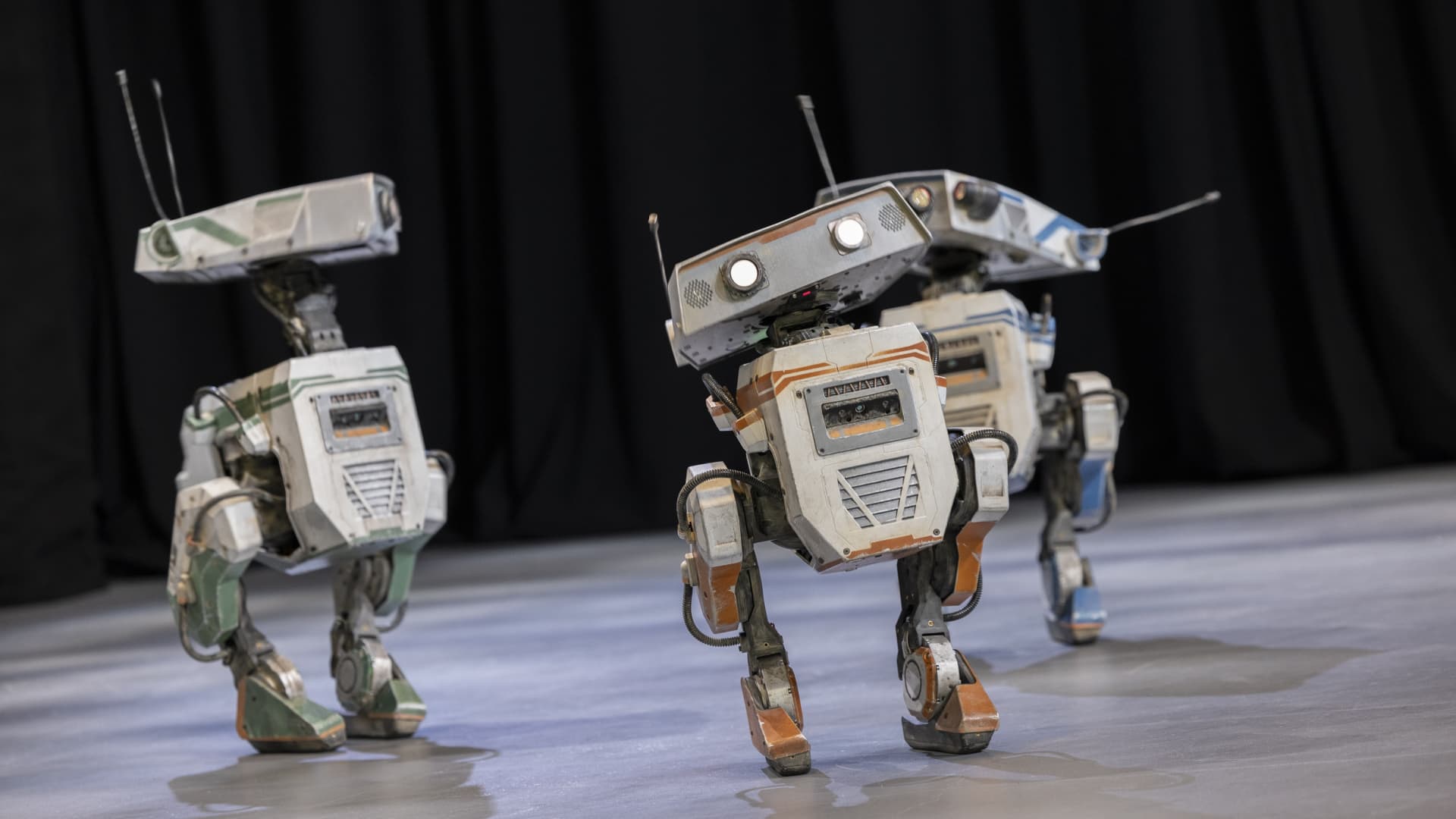
Engineers create the mechanics for the remote-controlled droids to move and balance, and work with animators to give those movements personality. The robots were designed to have childlike curiosity, reflected through cheeky head tilts and chirping beeps, along with a special emote dubbed "tantrum," where their eyes glow red and they emit a high-pitched squeal.
Guests who visit Galaxy's Edge in the next three months may stumble across this trio as part of Disney's "Season of the Force." They add to the regular roaming character meet-and-greets with the likes of Rey, Chewbacca, Kylo Ren and stormtroopers.
Disney hopes hands-on innovations such as the robots will keep guests coming.
"Those moments where there's a spark, there's an emotion that's on full display, where a guest is interacting with an attraction or a cast member or a character, it's very real and genuine," said D'Amaro.
That emotion was on display at the South by Southwest conference in March 2023, when Disney debuted a new iteration of its "stuntronics" robot, this time in the form of Judy Hopps from "Zootopia." This technology had previously been used to create the Spider-Man leap stunt at Avengers Campus. During the 2023 presentation, Imagineers showed the audience how the Judy Hopps robot could balance on roller blades and perform somersaults.
The biggest audience reaction came at the end of the presentation, when an Imagineer lifted the bot to sit on his shoulders and it realistically moved its legs to fit around his neck, as a child would. The simple motion — programmed just for the presentation, Imagineers told CNBC — captured something intrinsic to the human experience.
D'Amaro said those moments show why it's important for Disney animators to be part of the development process: As the Imagineers craft new technologies, the artists can help bring them to life.
It shows in Disney's rebrand of Splash Mountain. In both the California and Florida parks, the company is refurbishing the ride into Tiana's Bayou Adventure, which will feature dozens of animatronic characters from "The Princess and the Frog."
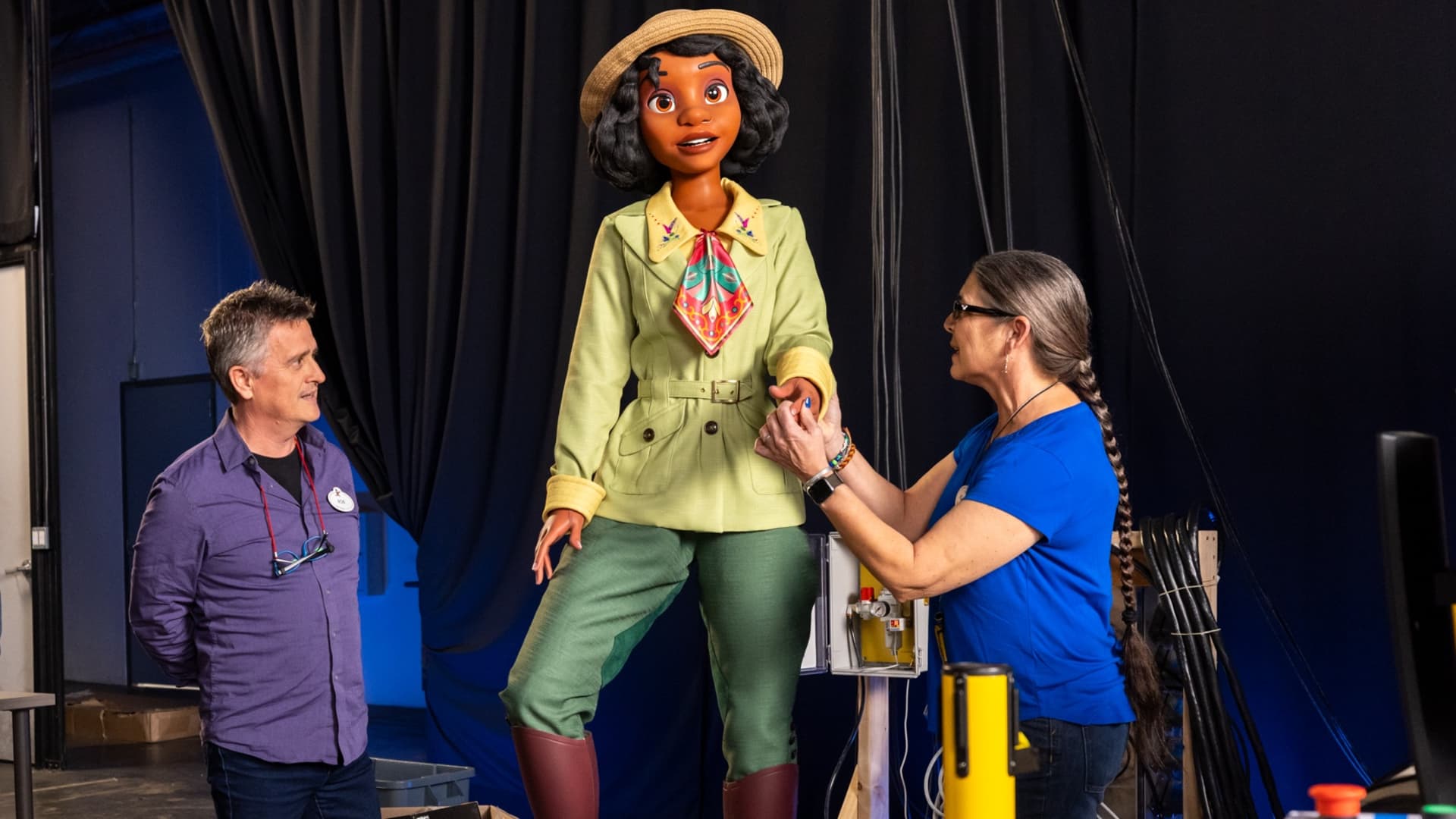
Imagineers have developed all-electronic audio-animatronics for the ride for characters such as Lewis, the trumpet-playing alligator from the film. Disney revolutionized animatronics decades ago with its hydraulic, or liquid-fueled, and pneumatic, or air-fueled, systems, but the electronic animatronics for Tiana's Bayou allow for more refined and precise movement, making them appear more realistic. Similar animatronics can be seen in the rides Smuggler's Run and Rise of the Resistance, in Galaxy's Edge.
Interior pieces of some of the animatronics were crafted using 3-D printing, resulting in a lighter-weight material.
Telling stories in the parks
Disney's ambitions to grow its experiences unit hinge in part on making its attractions feel more real.
"They continue to push the envelope of storytelling and creativity," D'Amaro said of the Imagineering team.
He cited the recently shuttered Star Wars Galactic Starcruiser, a hotel and immersive experience that took guests on a two-day "voyage" in space. It was a 48-hour interactive story that allowed fans to physically play in the Star Wars universe.
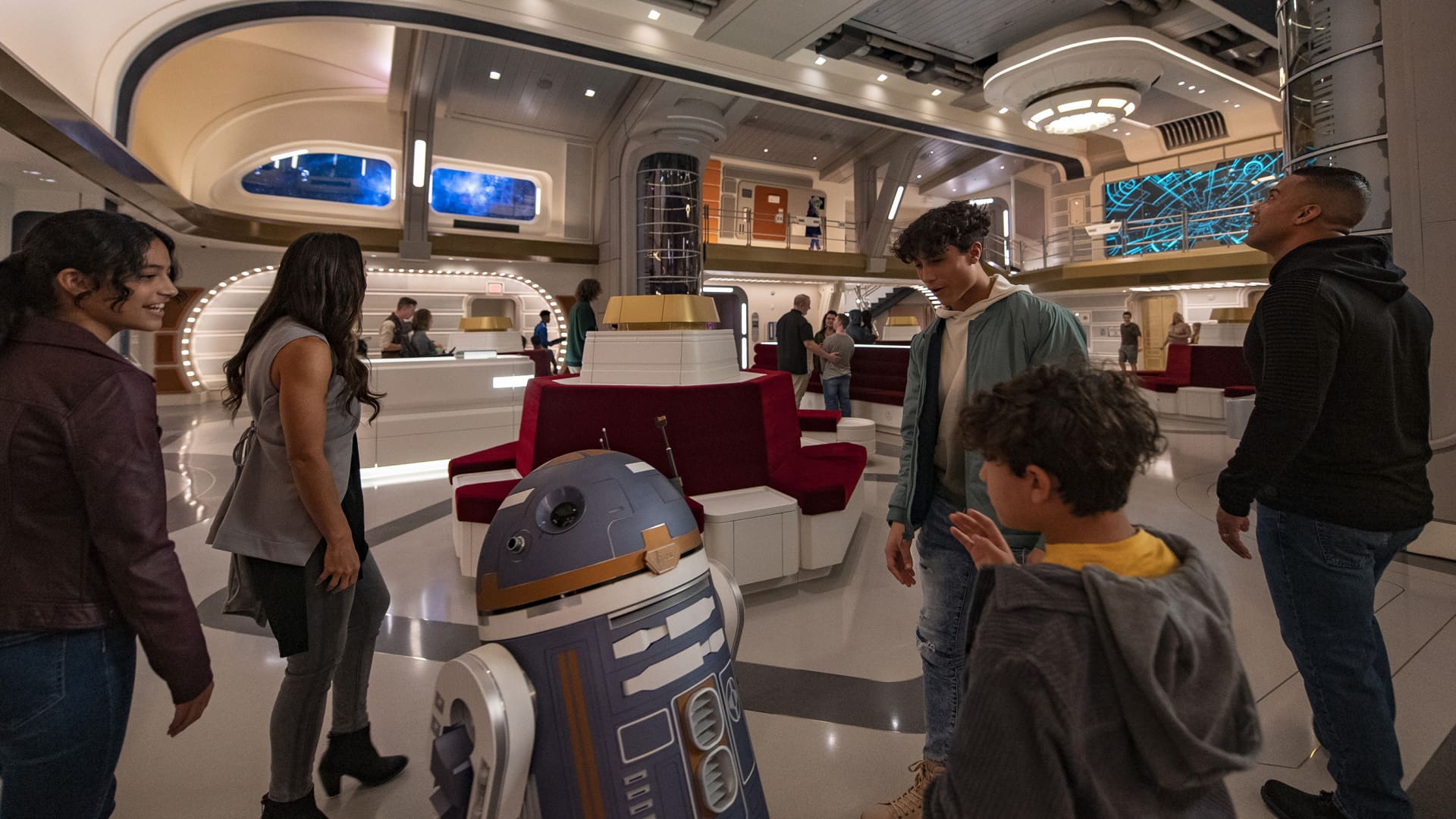
"This is something that had never been done before," D'Amaro said. "It was difficult to even explain to the public, and I think it was incredibly brave for us to move into this space. ... And this, to me, says Imagineering is still at its best today."
High ticket prices deterred the average parkgoer, and the Galactic Starcruiser shuttered in September. Still, D'Amaro said the experiment was a learning opportunity for the company.
"Those learnings are being employed on the next experiences, which we haven't even announced yet," he said.
Storytelling is at the heart of everything across Disney's experiences division.
This extends to Disney's cruise line and hotels, as well as its video game business. The company has a fleet of five cruise ships, and plans to add three more by fiscal 2026.
The Disney Wish, which made its maiden voyage in 2022, was the first addition to the fleet in a decade and bet big on its powerhouse franchises to entice travelers to the high seas.
There's a "Frozen" sing-along dinner and a Marvel dining experience, as well as a Star Wars-inspired Hyperspace Lounge. The ship also has the first ever Disney water ride attraction on board, the AquaMouse.
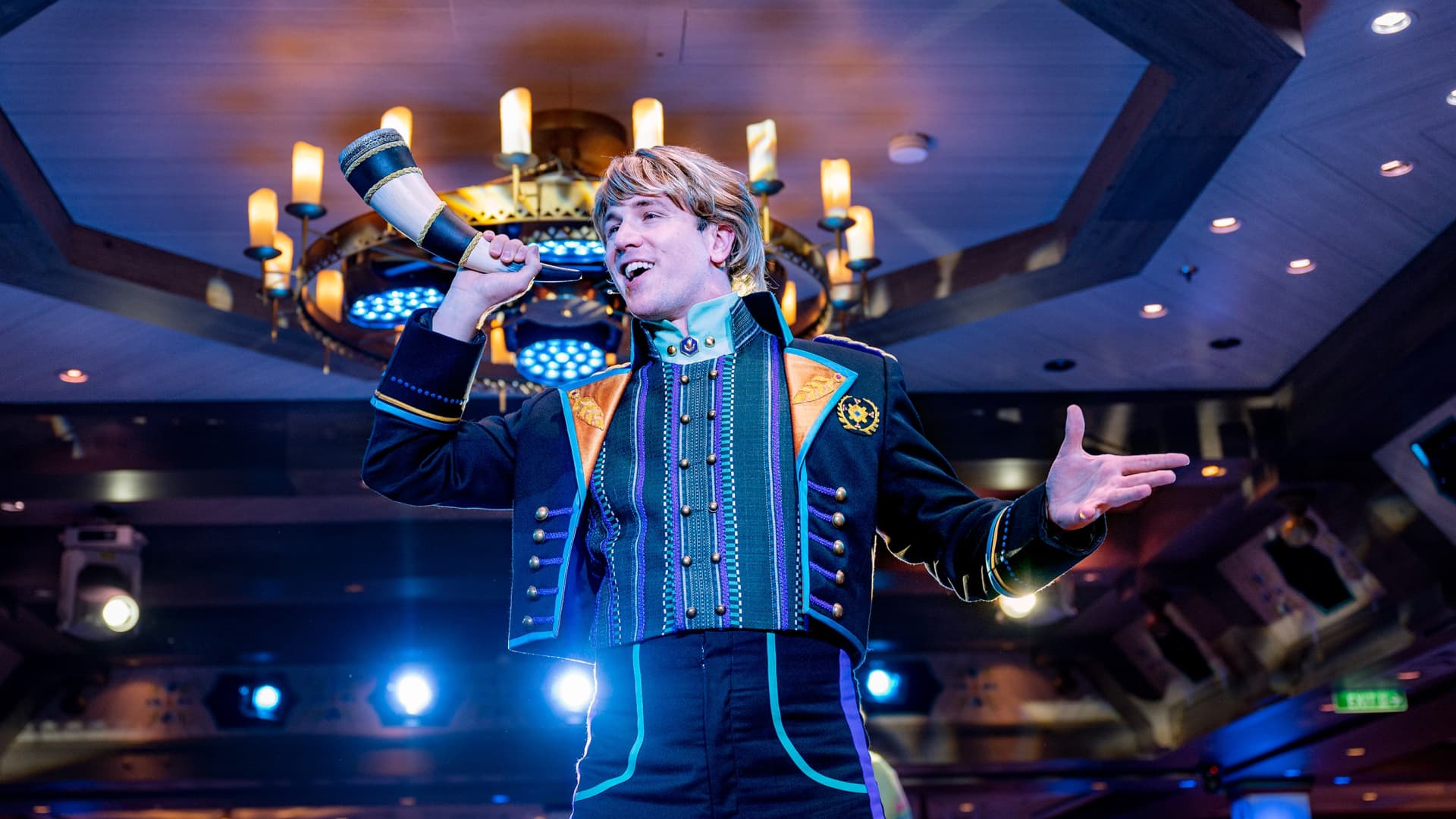
"This is something I think that's really important, the idea of the Disney difference," D'Amaro said. "That this company works together as one is more powerful now than I think it ever has been — whether it's [entertainment co-chair] Alan Bergman in the studios creating a new property that we can then take to Disney experiences and bring it to life and extend that story in brand new ways, or franchises that are birthed out of the theme parks."
Disney's 'blue sky'
Disney's experiences division has immediate expansion plans — even before the bulk of the planned $60 billion investment kicks in.
Next to open for Disney is Fantasy Springs, an eighth port at the Tokyo DisneySea park. The land will be home to three new areas — inspired by the films "Frozen," "Tangled" and "Peter Pan" — as well as the new Tokyo DisneySea Fantasy Springs Hotel.
Concept and design work is also underway for the Tropical Americas area at Disney's Animal Kingdom in Florida. There have been no official updates on the previously announced third ride at Avengers Campus in the California Adventure area at Disneyland.
The company is developing what it's dubbed "blue sky" ideas for its parks — projects that are still in early development and may ultimately not see the light of day.
Disney has teased that an area based on "Coco" or "Encanto" or both could be underway in the Magic Kingdom. There were also talks about opening an area of the Magic Kingdom that would be overrun by Disney villains.
During the company's investor meeting this week, Iger even teased the possibility of an "Avatar" land at Disneyland in California.
"We have thousands of acres of land still to develop," Iger said during the Morgan Stanley Conference in March. "We could actually build seven new full lands if we wanted to around the world, including the ability to increase the size of Disneyland in California, which everybody thinks is kind of landlocked, by 50%."
Price points for these projects will vary, if they do come to fruition. The recent additions of the two Star Wars: Galaxy's Edge lands in Disneyland and Disney World are estimated to have cost $1 billion each.
That's where the $60 billion investment comes in.
Disney likely won't spend it all soon.
"We actually have a fairly good idea in the near term of what's being built, but we're purposefully not going to allocate it all," Iger said at a media event Tuesday, according to the Los Angeles Times. "Because who knows? In five years we can end up with a giant hit movie — think 'Frozen' — that we may want to mine essentially as an attraction, or a hotel or restaurant in our parks. So you want to maintain some flexibility."
But Iger won't be head of the company in five years, if all goes according to plan. The CEO, who returned to the post in 2022, is set to step down at the end of 2026. Disney's board is in the process of succession planning.
D'Amaro is on the short list.
His track record helming Disney experiences is part of a 26-year career with the Walt Disney Company, in which D'Amaro has held posts as chief financial officer for consumer products and global licensing and chief commercial officer for Walt Disney World Resort.
For now, however, D'Amaro said he is concentrating on his current post. He called it a "blessing" to have Iger back as CEO.
"I'm focused on Disney experiences," he said when asked about potential succession plans. "And I'm focused on driving innovation and storytelling forward and paying tribute to our fans and continuing to grow this business."






